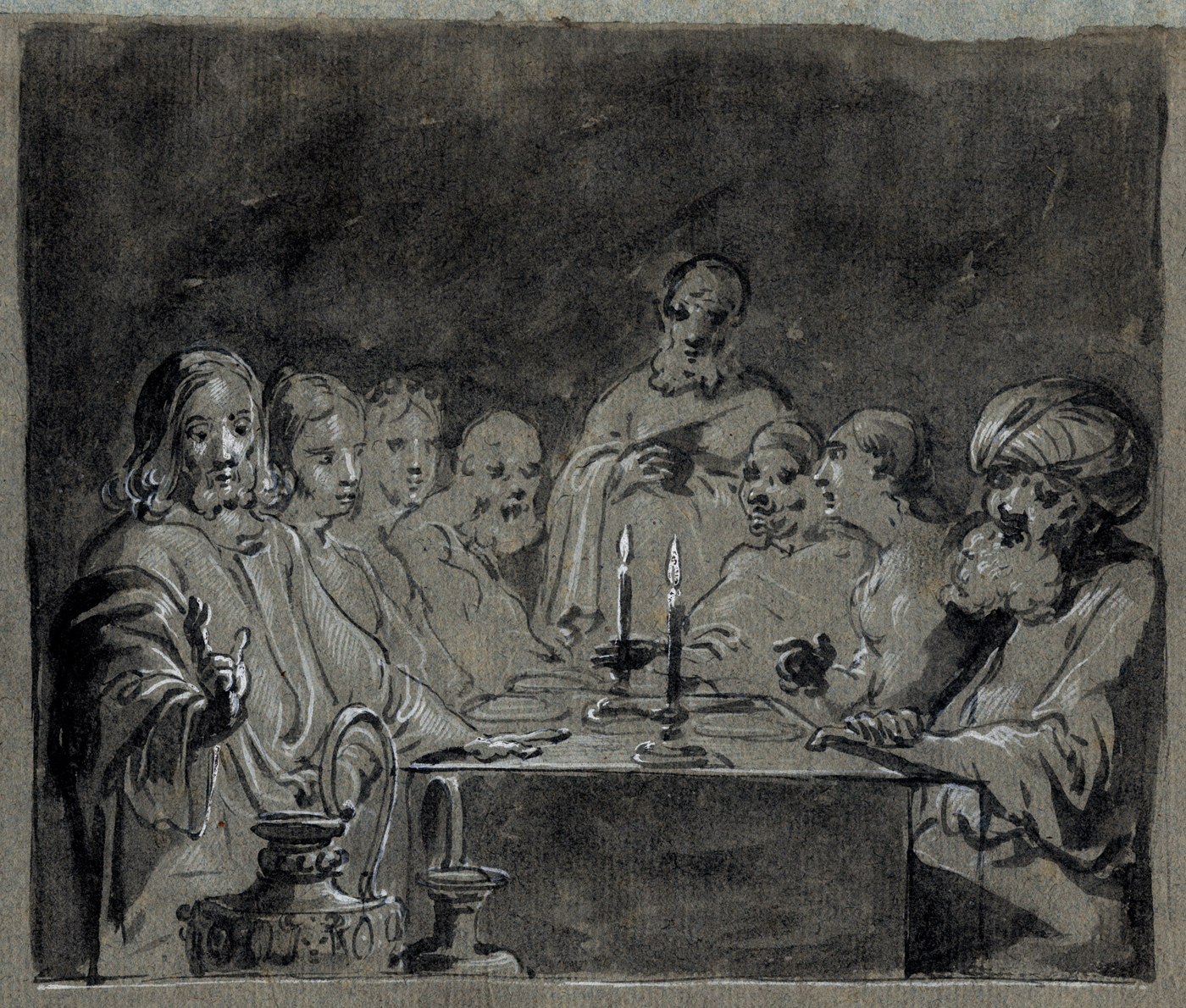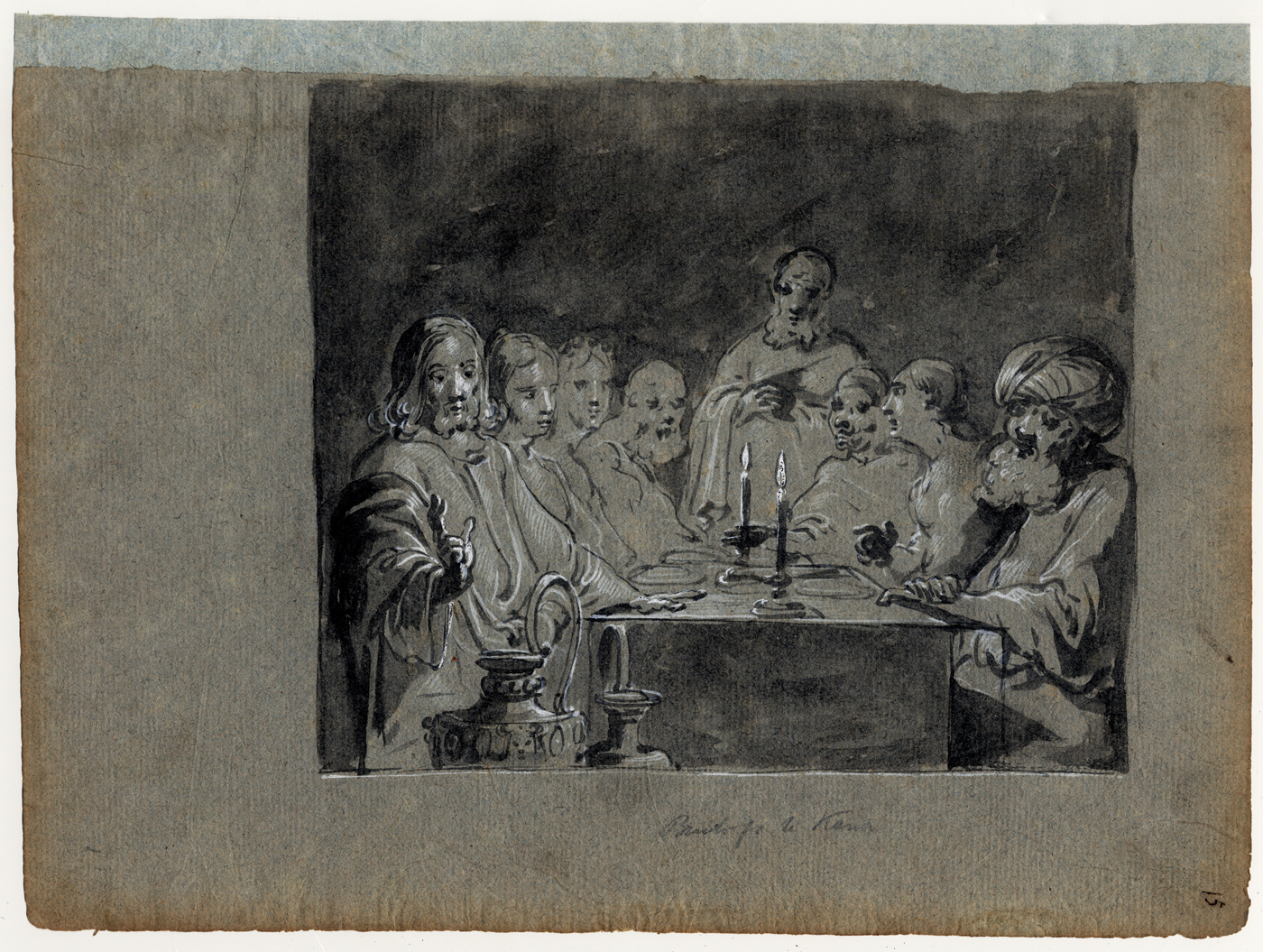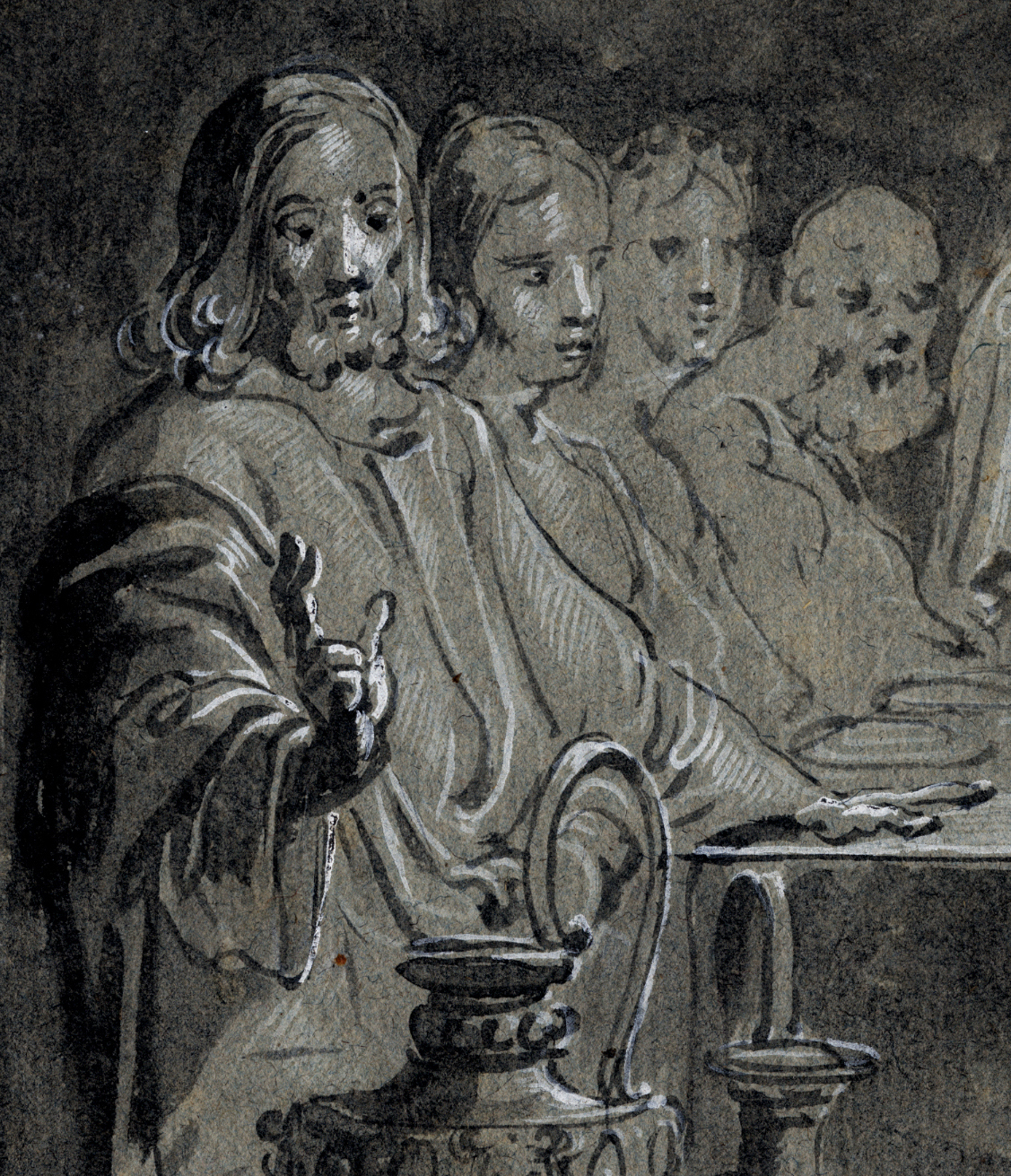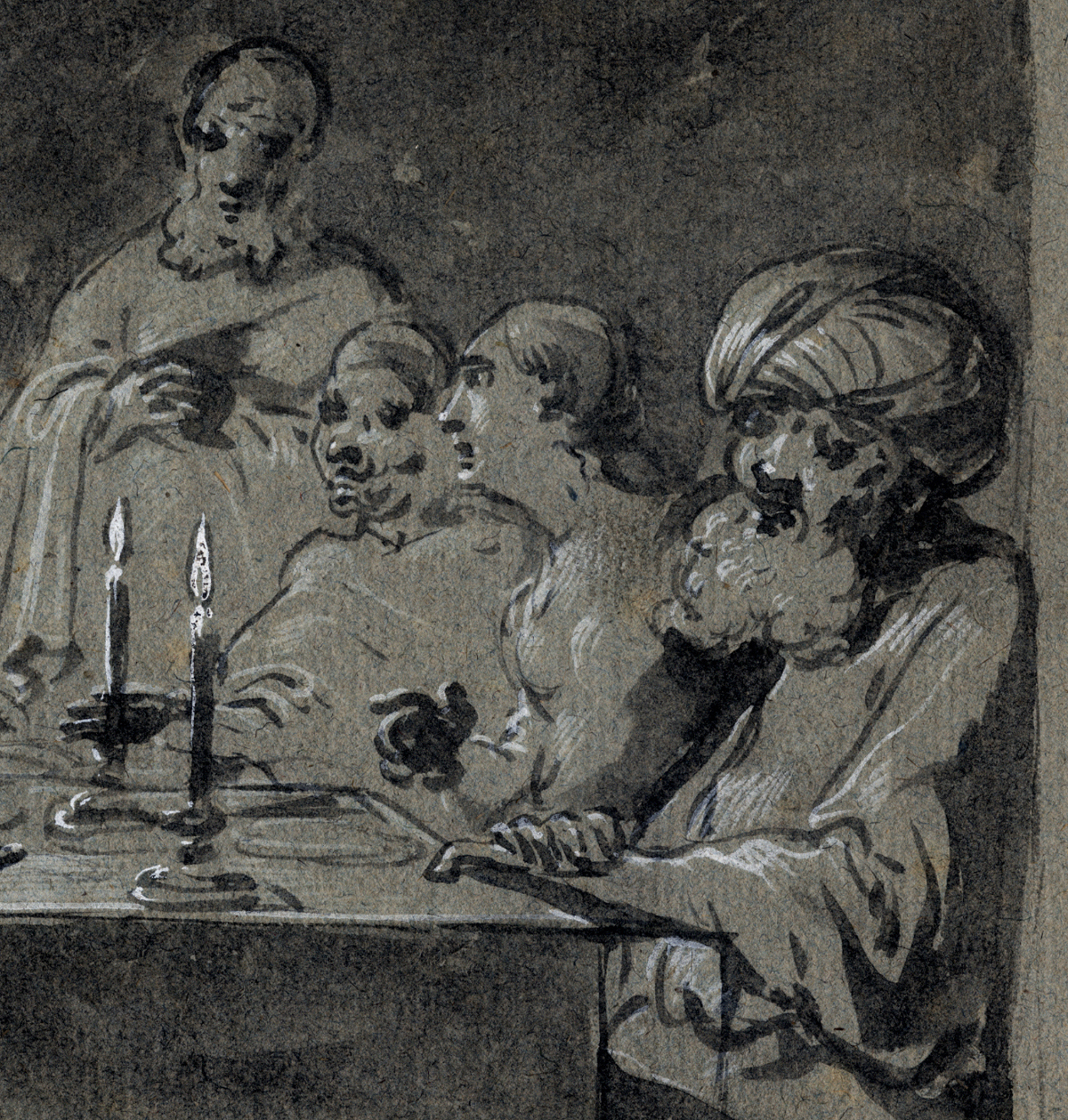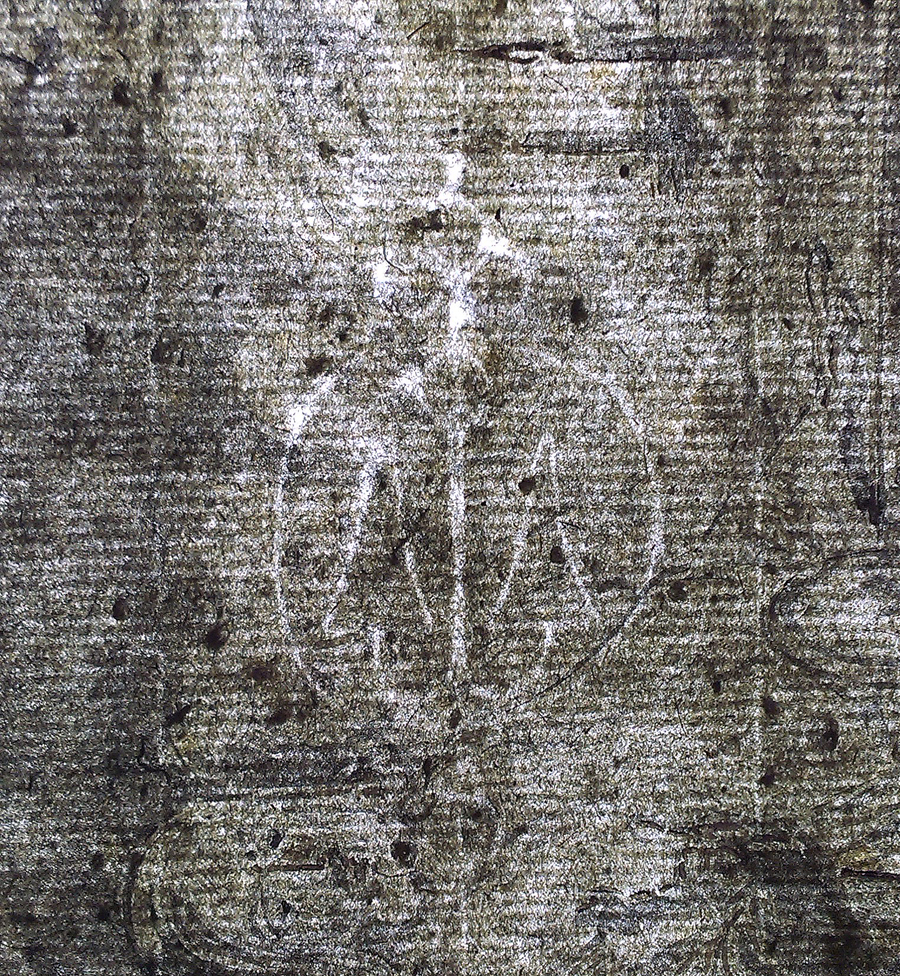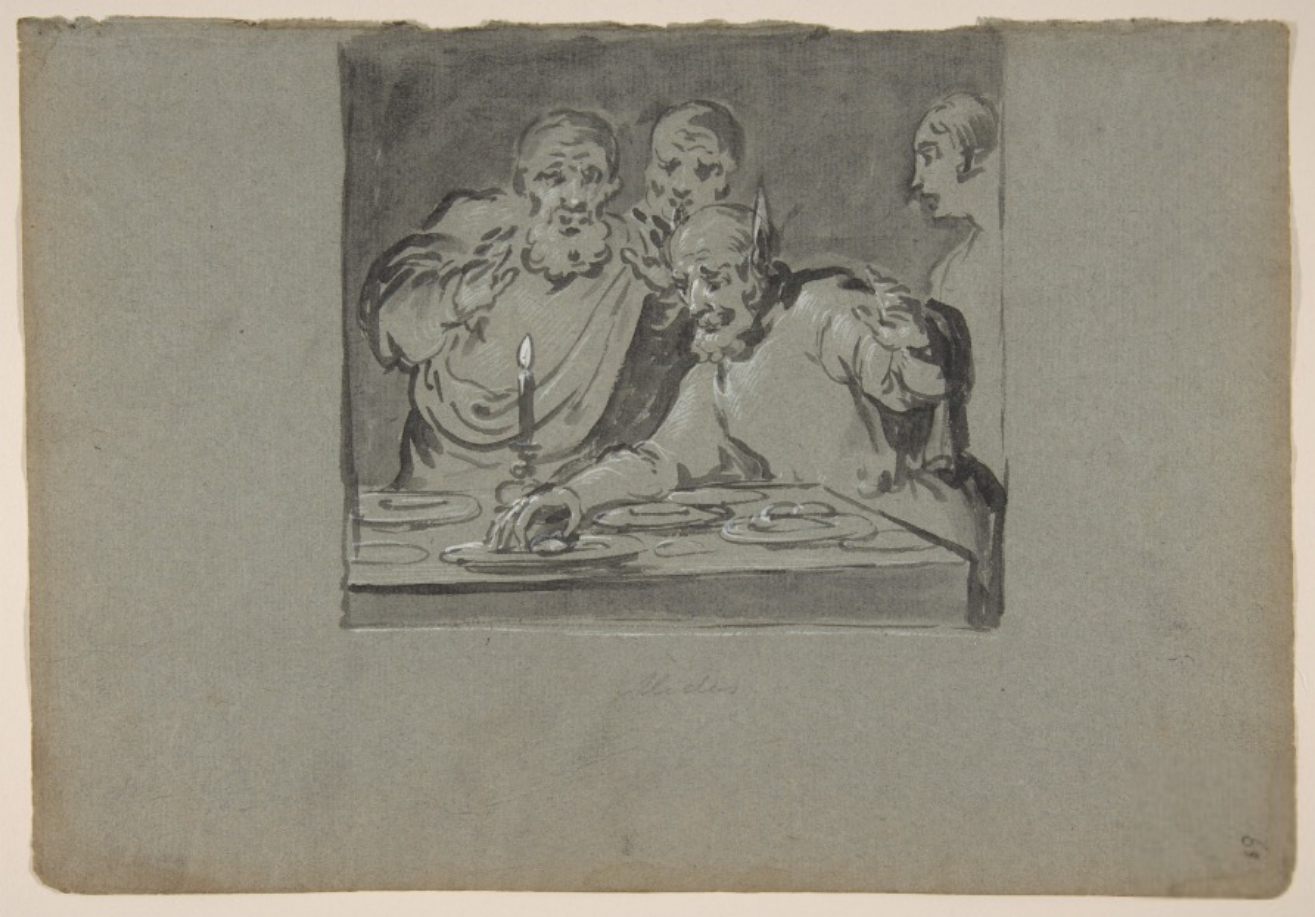LEONAERT BRAMER (Delft 1596 – 1674 Delft)
Leonaert Bramer (Delft 1596 – 1674 Delft)
The Wedding Feast at Cana
Brush and grey ink, grey wash, heightened with white, on blue-grey paper partially washed light brown, watermark anchor in a circle, 223 x 299 mm (8.8 x 11.8) (sheet size), 170 x 198 mm (6.7 x 7.8 inch) (image size)
Executed in Italy c.1619–1627
Numbered ‘15’ (pen and brown ink, lower right)
Provenance
~ Collection Knorr, Strassbourg
~ Dr Cornelis Hofstede de Groot (1863 – 1930)
~ His sale, C.G. Boerner, Leipzig, 4 November 1931, lot 33 (the album)
~ Anonymous sale, Galerie Bassenge, Berlin, 5 December 1984, lot 4037 (the album, which was disassembled afterwards)
~ Jacobus A. Klaver, Amsterdam
Literature
Jane ten Brink Goldsmith and Michiel C. Plomp, Leonaert Bramer 1596-1674, ingenious painter and draughtsman in Rome and Delft, Zwolle 1994, p. 318, no. 37 (the album)
***
Leonaert Bramer is one of the most intriguing and at the same time most underrated artists of the Dutch seventeenth century.1 He travelled widely in Italy and France from 1614 to 1628. In Rome he was one of the founders of the Bentvueghels group of Northern artists and was involved in several street brawls, including one famously with Claude Lorrain. Bramer drew on a variety of influences for his most characteristic paintings - small nocturnal scenes with vivid effects of light. Works such as the Scene of Sorcery (Bordeaux) have earned him the reputation of an interesting independent who cannot easily be pigeonholed. Bramer was also one of the few Dutch artists to paint frescoes in Holland, but none of his work in the medium survived.
Bramer evidently knew well the greatest of his Delft contemporaries, Johannes Vermeer, for he came to the latter’s defense when his future mother-in-law, Maria Thins, was trying to prevent him from marrying her daughter. In fact, it is likely that Bramer, rather than Carel Fabritius, was Vermeer's teacher. Bramer had a wide-ranging interest in European literature and illustrated Virgil's Aeneid, Till Uilenspiegel, and various Spanish novels, always in a style as much Italian and French in origin as Dutch. Because of his originality in choosing subject matter, the subjects of his works are often difficult to identify.
In this attractive drawing, Christ has ordered six jars to be filled with water during the wedding feast at Cana, and then miraculously turned them into wine. The episode is the first miracle of Jesus in the Gospel of John (2:1-11). The sheet originates from the so-called ‘Hofstede de Groot Album’, a sketchbook – or ‘teckenboeck’, in Bramer’s own words on one of the pages – of eighty sheets with various subject matter, from the Old and New Testaments to ancient history, mythology and genre scenes.2
The sheets from the album are characterized by a strongly chiaroscuro approach and rounded lines, which can also be seen in our drawing. The album contains Bramer’s earliest known drawings, as it was executed during his Italian sojourn between 1619 and 1627. The influence of Caravaggio and Bartolommeo Manfredi is evident. The album was dispersed after 1984 and sheets from it are now in private and museum collections all over the world, including the Staatliche Museen in Berlin3 and the Metropolitan Museum in New York, which owns a sheet representing King Midas (fig.).4
SOLD
1. For the artist, see: Jane ten Brink Goldsmith and Michiel C. Plomp, Leonaert Bramer 1596-1674, ingenious painter and draughtsman in Rome and Delft, Zwolle 1994.
2. For the album, see Ten Brink Goldsmith and Plomp, op. cit., pp. 187-89 and pp. 210-11.
3. The Annunciation to the Shepherds, Preussischer Kulturbesitz, Staatliche Museen, Kupferstichkabinett, Ten Brink Goldsmith and Plomp, op. cit., p. 210, fig. 1a.
4. 210 x 300 mm; inv. no. 2008.225; see Arno Winterberg Auktion 74: Landkarten, Stadtansichten, dekorative Graphik, illustrierte Bücher, Gemälde, Aquarelle, Zeichnungen und Graphik des 15.-20 Jahrhunderts, 5 May 2007, no. 151.
